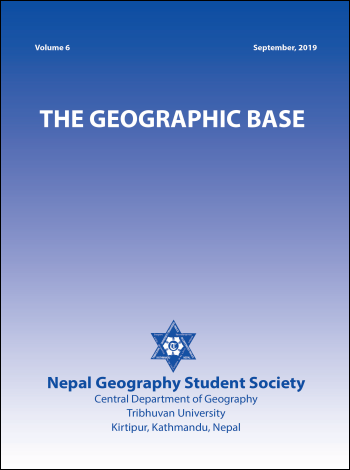Review of vedic Literature from the Perspective of Physical and Human Geography
DOI:
https://doi.org/10.3126/tgb.v6i0.26162Keywords:
Ved, Vedic, Purans, Seasons, Measurement, GeographyAbstract
Vedas are earliest collection of Hindu scripture. The word Veda was originated from Sanskrit verb ‘Vida’ inane meaning to “to know”. Vedas are collection of knowledge. Literatures, written on the basis of Vedas are called Vedic literature. Itihansas and puranas are also known as Vedic literature. Each and every dimension of geography is expressed in Vedic Literature very strongly. This paper simply tries to present the geographical issue expressed in different Vedic literature. Different research papers written about Vedic geography, books of Vedas and puranas are used as materials for the formation of this paper. Topographic explanation and their classification for regionalization is carefully presented in vedic literature such as Dwipas, Khandas and Barshas. River is praised as mother in Vedas and nature and behavior of river was known by Vedic people. Ricveda is full of praising river. Seasonality month and different weather is explained in different Vedas and vedic literatures. Six seasons and twelve months are explained in vedic literature. Fire, wind, water, earth are taken as different forms of god and praised as human environment interaction. People are discouraged for deforestation means not to destroy home of god. Quantitative and mathematical geography is another great feature of vedic literature. Measurement unit techniques of time and distance are very strong geographical representation of vedic literature. The measurement of time starts from ‘pramanu’ to ‘mahayuga’ and distance starts from ‘pramanu’ to ‘krosha’.
Downloads
Downloads
Published
How to Cite
Issue
Section
License
© Nepal Geography Student Society




